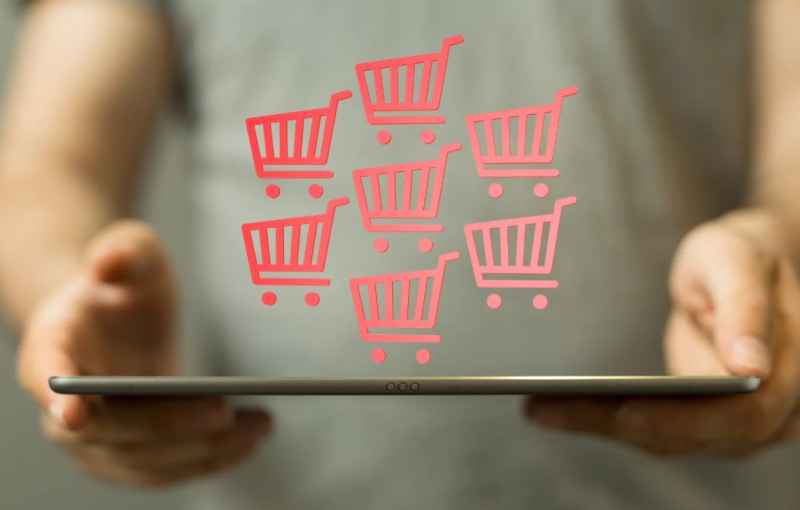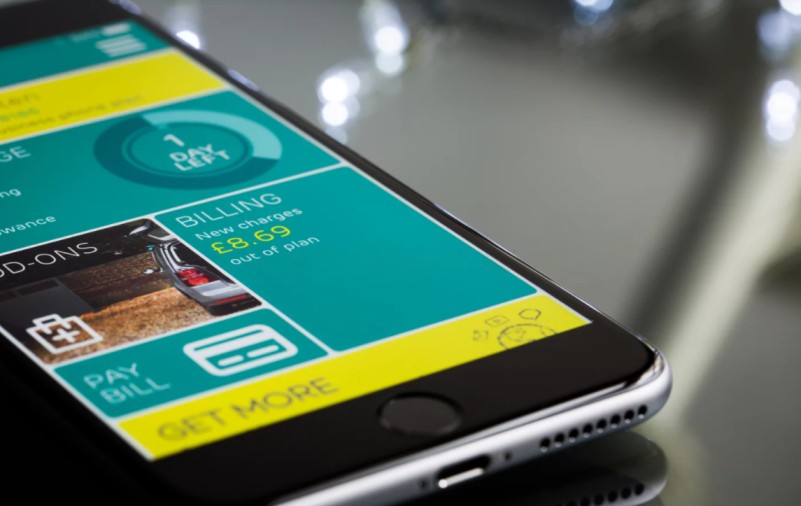
eCommerce websites are online portals that allow people to buy and sell goods and services over the internet by exchanging information and money. Anything that requires a transaction can be done online easily. A term that has been used quite a bit lately in the online retail world has been ‘one-page eCommerce site’. What is a one-page eCommerce site and how is it used?
Purpose of a One-Page eCommerce Site
In general, an eCommerce website allows an organization to operate almost fully online, avoiding the need for a home office with sales and management personnel. The procedure is made easy, which sets it different from other websites that still focus on company development. A one-page ecommerce site allows you to display all your products on one-page, which makes the site a lot easier to manage and helps customers see all products from one view.
One-Page eCommerce Site: Different Kinds of Sites
- Enterprise-to-enterprise (B2B) The framework of the business-to-business eCommerce model is exactly what it sounds like.
- Business-to-consumer (B2C).
- Client -to-client trades (C2C).
- Client-to- business (C2B).
- Website including a single brand.
- Retailers of the internet
- Websites where you can earn money as an affiliate.
Top 5 eCommerce Websites
- Daraz
- Shopify
- Ali Express
- Amazon
- oLx
Gain of eCommerce Websites
eCommerce and drop shipping are profitable. And this is the perfect tool to make money in a short time with little effort. It’s time to start working for a living.
Relevant Pros and Cons of eCommerce Websites
PROS
- Wider Market
With eCommerce, you can also be able to control the clients from the whole world online comfortably. Clients may shop from any place at any time, and more individuals are getting presented to buying on their cell phones.
- Get a review of clients and suggestion
When your store is fresh and no one trusts it immediately because they consider that it may be a scam, getting reviews of clients make your store trustworthy. When any buyer visits your store, he observes the reviews on the products. Sometimes clients also give a review and sometimes the seller must manage them by asking people to review his product. There is an approach to follow your traffic and customers’ entire client excursion to get bits of knowledge about watchwords, client experience, showcasing messages, evaluating methodology etc. and the sky is the limit from there.
- Fast response to the customer according to the market trends
The improvement in coordination, particularly for “outsource” traders, permit firms to respond rapidly to advertise and web-based business advancements, just as shopper demand. Traders can likewise make limits and advancements on the fly to draw in clients and increment deals.
- Lower Cost
With the development of web-based business stage innovation, it is currently easy and reasonable to establish and deal with a minimum investment business website. Vendors at this point don’t need to spend a major measure of cash on Adverts or signs, nor do they need to stress over staff or land costs.
- More Opportunities to “Sell”
In an actual store, dealers can just present a restricted amount of item data. Web-based business sites, on the other hand, empower more data to be incorporated. (ex. demo recordings, surveys, client tributes etc.)
- Customized Messaging
Vendors can give nitty-gritty information and item suggestions to enlisted clients utilizing internet business stages. By showing the most significant material to every guest, these designated messages can help upgrade change.
CONS
- Lack Of Personal Touch
A few groups favored the quality assistance they get when they visit an actual store and draw in with salesmen. Clients need to purchase the product as well as have an incredible encounter at the same time, hence an individual touch is particularly indispensable for organizations offering top-of-the-line items.
- Lack Of Tactile Knowledge
Purchasers can’t contact or feel an item regardless of how great a video is created. Not to mention conveying a brand insight through the two-dimensionality of a screen, which can habitually include the feelings of touch, smell, taste, and sound, is no simple work.
- Cost And Product Comparison
Customers may think about an assortment of items and pick the best arrangement by buying on the web. Therefore, numerous traders are compelled to contend on value, restricting their overall revenue.
- Need For Internet Access
This ought to be obvious, however, remember that your customers will require Internet availability to shop with you! Since numerous online business frameworks contain highlights and functionalities that require fast Internet access for a compelling client experience, guests with helpless associations might be overlooked.
- Credit Card Fraud
For internet businesses, credit card theft is a real and rising issue. It can result in a chargeback, resulting in revenue loss, penalties, and a bad reputation.
eCommerce Website Development
The bulk of business owners, salesmen, entrepreneurs, and most commercial businesses invest their money in installing an eCommerce website to turn the competitive advantages of online shopping into a constant revenue source through a competent eCommerce online store.
Clients can discover, analyze, and buy desired products or services online in seconds by using their smartphones, tablets, and PCs. Deciding to invest time, effort, and money in the eCommerce website development process is a rational decision for increasing your business growth with more sales and higher profits.
In terms of advantages of online buying, eCommerce websites provide several other competitive benefits, including but not limited to:
- Expanding your business’s reach by focusing on several local and international markets.
- Increasing sales volume and attracting more potential clients with a professional online eCommerce store that is available 24 hours a day, 7 days a week.
- Tracking and monitoring customer behavior (i.e., the attention of your eCommerce website consumers) to tailor your items and marketing efforts.
- Using remarketing efforts to increase up-selling and cross-selling opportunities.
- There are limitless business opportunities generated daily once you have a professional online store built to suit your business demands and goals when it comes to the benefits of eCommerce website creation.
5 Steps for One-Page eCommerce Site Development
STEP#1
Choose your plan and sign up.
STEP#2
Decide how you want to create your site.
STEP#3
Connect your domain.
STEP#4
Set up your e-commerce website, products, shipping options, and payment
STEP#5
Market your ecommerce website.
Shopify Development Step-by-Step
Shopify is an online website tool that providing the platform for developing e-commerce store. You have to pay only some dollars yearly for using their services. By log into this platform online and you can start to design your store. If you are not able to do this you can also hire any freelancer for this task.
STEP#1
Sign up for a Shopify account.
STEP#2
Get to know your way around the Shopify admin dashboard.
STEP#3
Select your Shopify theme from default and premium options.
You may test and review changes to your distributed subject, so that you can attach as many pages as you need to your Shopify account, contingent upon the package you select.
STEP#4
Add your items to the list.
STEP#5
The main option for designing and building your store is drop shipping. You can also upload your products manually by adding their pictures and prices. But you also have the choice to import products from any other online store. To do this, attach the app extension in your Shopify store by which you can export products from the following stores:
- Ali Express
- Alibaba
- Amazon
STEP#6
Add all relevant app extensions to your store. These applications serve many purposes, including providing customer support, importing products, reviewing imports, and maintaining the dealings and tracking system of your order. In the Shopify online store design, some apps are also free. You can also buy some premium apps for more accurate results.
STEP#7
In this step, you have to add the payment method for clients during online shopping. Customers can pay through any method that is very useful and helpful. Go to Payment suppliers in Settings and deactivate any installment suppliers you’ve empowered. Then, at that point go to Accept Visas – > Add a supplier – > Third-party charge card supplier – > Provider – > other – > Bogus Gateway – > Continue – > Activate the entryway.
STEP#8
In this step, you analyze the store by placing the order and check the payment method and shipping detail. It is beneficial because you can get the idea about your store as a client experience and observe any error you face by placing an order.
STEP#9
Go live with a custom domain name.
Now all you must do is add your domain to Shopify. Then you will be ready to go live with your business. You will need a domain name (your website address) to be found by visitors and search engines, just like any other website. And you are all set!
As you can probably tell, creating a one-page eCommerce site is a very simple process. Anyone can do it from anywhere at any time. However, if you are in need of advanced services to set up and run your eCommerce store, you can always partner with a reputable eCommerce development firm to help get your store up and running in very little time.











